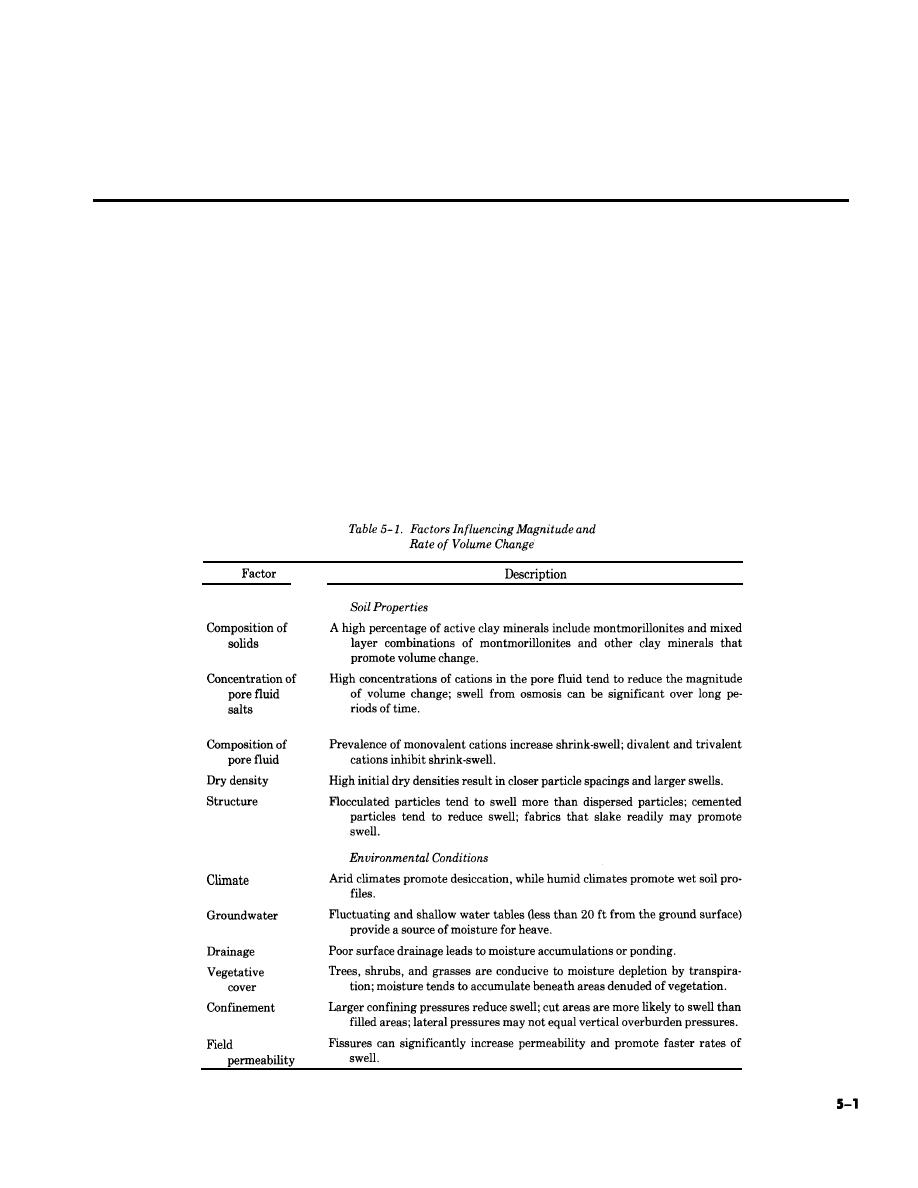
TM 5-818-7
CHAPTER 5
METHODOLOGY FOR PREDICTION OF VOLUME CHANGES
5-2. Factors influencing heave
5-1. Application of heave predictions
Table 5-1 describes factors that significantly influ-
Reasonable estimates of the anticipated vertical and
ence the magnitude and rate of foundation movement.
horizontal heave and the differential heave are neces-
The difficulty of predicting potential heave is compli-
sary for the following applications.
cated beyond these factors by the effect of the type
a. Determination of adequate designs of structures
and geometry of foundation, depth of footing, and dis-
that will accommodate the differential soil movement
tribution of load exerted by the footing on the magni-
without undue distress (chap 6). These predictions are
tude of the swelling of expansive foundation soil.
also needed to estimate upward drag from swelling
Additional problems include estimating the exact loca-
soils on portions of deep foundations such as drilled
tion that swelling soils will heave or the point source
shafts within the active zone of moisture change and
of water seeping into the swelling soil and the final or
heave. Estimates of upward drag help determine an
equilibrium moisture profile in the areas of heaving
optimum design of the deep foundation.
soil.
b. Determination of techniques to stabilize the foun-
dation and to reduce the anticipated heave (chap 7).




 Previous Page
Previous Page
